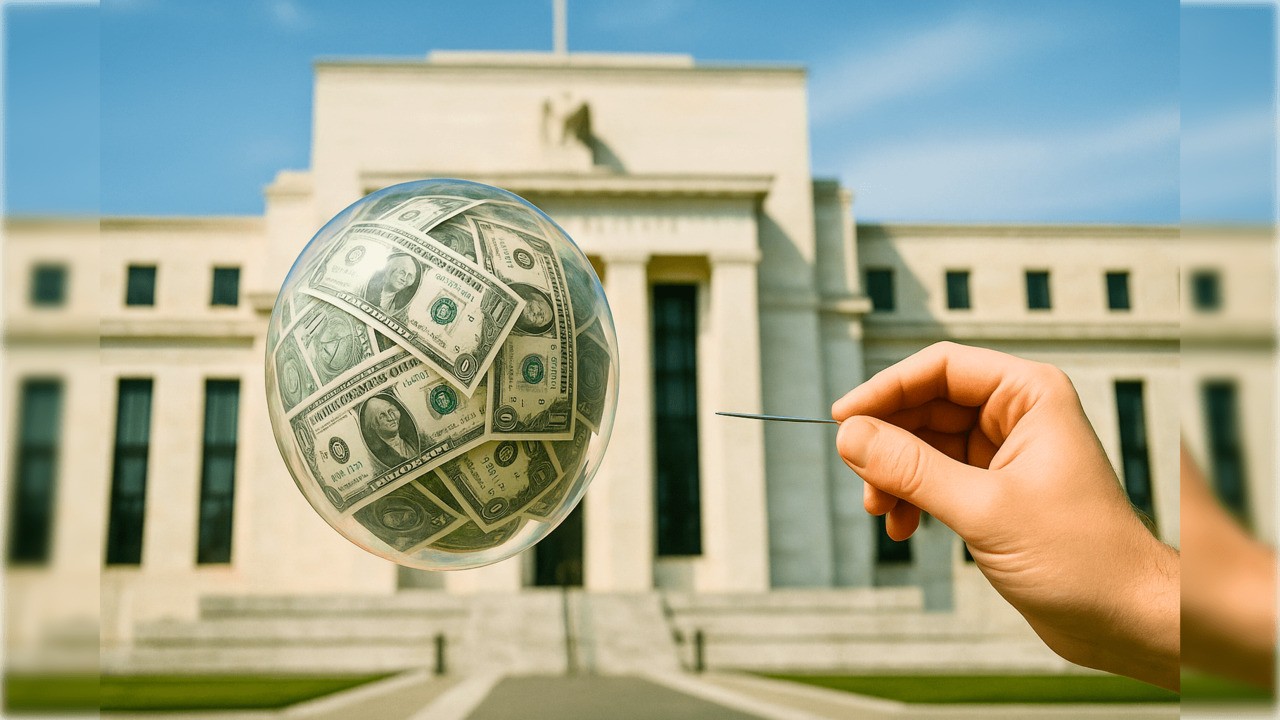(Money Metals News Service) Mike Maharrey begins this episode of the Money Metals Midweek Memo by pointing out a paradox. Rising consumer debt is often reported as good news, framed as a sign of economic confidence. Analysts cheer when people borrow more, saying it means households are optimistic enough to spend.
But Maharrey notes the reality is far less rosy.
America’s Borrow-and-Spend Economy
The United States has built an economy on consumption before production. Instead of producing first and then consuming, Americans rely on borrowing to buy goods—many of them imported—and then use credit to finance the spending.
This model may keep things moving in the short term, but it is not sustainable forever. Every economy, like every household, eventually reaches its credit limit. Maharrey argues that the United States is approaching that breaking point, and when it comes, the consequences will be severe.
National Debt Surpasses $37 Trillion
In August 2025, the national debt quietly crossed $37 trillion. The number is so large that it can feel meaningless, but the speed of growth makes the problem clear. It took just 265 days to move from $36 trillion to $37 trillion, even with a six-month pause during the debt ceiling standoff.
Since Congress suspended the debt ceiling in June 2023, the Biden administration has added $4.54 trillion in only 18 months. Federal spending continues at a pace of $500 to $600 billion every month. Maharrey stresses that debt expansion is baked into the system and shows no sign of slowing.
If the bill ever came due, each U.S. citizen would owe $108,000, and every taxpayer would owe $323,000. The debt is now larger than the combined GDP of China, Germany, India, Japan, and the United Kingdom. Numbers on this scale, Maharrey says, reveal just how unsustainable the current trajectory has become.
The Cost of Debt Service
Paying interest on the debt has already become one of the federal government’s biggest expenses. In July 2025 alone, the Treasury spent $91.9 billion just on interest payments.
For the current fiscal year, those interest costs have already surpassed $1.01 trillion. That is more than the government has spent on defense or Medicare. Only Social Security costs more.
The debt-to-GDP ratio now stands at 123.3 percent. Economists have long warned that when debt exceeds 90 percent of GDP, growth slows by roughly 30 percent. Maharrey argues this means the debt is not only unsustainable, but actively dragging the economy down.
Corporate Bankruptcies Surge
The private sector is also buckling under the weight of leverage. In the first seven months of 2025, 446 companies filed for bankruptcy. That marks the worst stretch since 2010, in the aftermath of the Great Recession.
July alone saw 71 bankruptcies, the highest monthly total since the pandemic shutdowns of 2020. Years of cheap borrowing left many companies heavily indebted. Now that interest rates are higher, the weaknesses are being exposed.
Maharrey warns that the rise in bankruptcies is not just a business story—it signals cracks spreading across the entire economy. The so-called boom many claim to see is in fact being undermined by excessive debt.
Consumers Under Pressure
Households are also drowning in red ink. Americans now carry $1.3 trillion in revolving debt, most of it in credit cards.
The average annual interest rate on those balances is 20.13 percent, with some cards charging as much as 28 percent. Subprime borrowers are struggling the most, with 90-day delinquencies up 109 percent from last year.
But even prime borrowers—those with excellent credit—are beginning to stumble. Late payments in that group are up 47 percent. Auto loans and mortgages are showing more delinquencies as well, adding to the financial strain.
Maharrey notes that even the most creditworthy consumers are starting to feel the pinch, a troubling signal for an economy that relies so heavily on spending.
Stagflation on the Horizon
The Federal Reserve faces a dilemma. Cutting rates might provide short-term relief for debtors, but it would also fuel inflation. Holding rates higher could help restrain prices, but it risks triggering defaults and recession.
Inflation is still running above 3 percent, well above the Fed’s 2 percent target. At the same time, growth is slowing. Maharrey argues that this combination points to stagflation—a period of low growth coupled with persistent inflation.
The roots of the problem stretch back more than a decade. After the 2008 financial crisis, the Fed held rates near zero for years and engaged in repeated rounds of quantitative easing. Those policies encouraged massive borrowing and created today’s debt bubble. Now the bill is coming due, and policymakers are cornered.
Why It Matters for Investors
Maharrey insists this is not just a matter of government bookkeeping. The debt directly affects investors and savers.
As demand for U.S. treasuries weakens, interest rates rise. That makes it more expensive for the government to borrow. Eventually, the Federal Reserve will be forced to resume quantitative easing, buying bonds with newly created money to push yields down.
That process is inherently inflationary. For ordinary people, it means their dollars will continue to lose purchasing power. For investors, Maharrey argues, the clear implication is that gold and silver remain the most reliable way to preserve wealth in such an environment.
A Call to Prepare
The debt bubble will not last forever. At some point, it will burst, and when it does, inflation will surge again. Maharrey warns that there is no political solution. Every president since Calvin Coolidge has increased the debt, regardless of party or promises.
That leaves individuals with one option: prepare. Gold and silver provide the shield that sound money offers. Precious metals remain the only proven protection against currency debasement and financial instability.
Maharrey closes by urging listeners to act now, before the crisis fully unfolds. The debt bubble will eventually pop, and when it does, only those holding real money will be ready.

